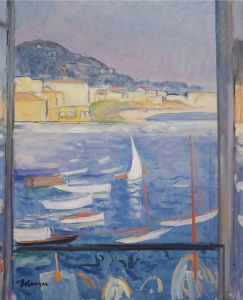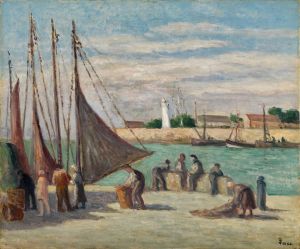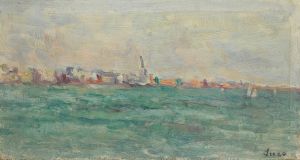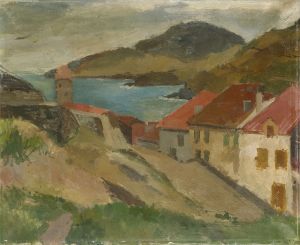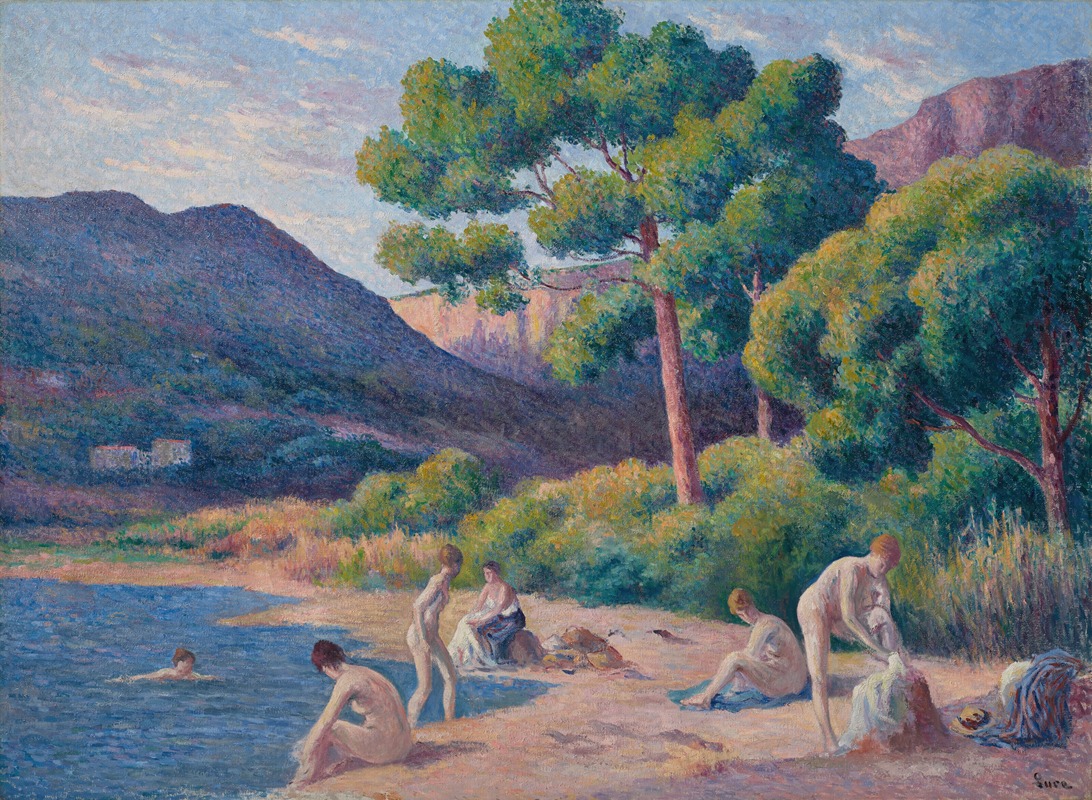
Baigneurs à Saint-Tropez
A hand-painted replica of Maximilien Luce’s masterpiece Baigneurs à Saint-Tropez, meticulously crafted by professional artists to capture the true essence of the original. Each piece is created with museum-quality canvas and rare mineral pigments, carefully painted by experienced artists with delicate brushstrokes and rich, layered colors to perfectly recreate the texture of the original artwork. Unlike machine-printed reproductions, this hand-painted version brings the painting to life, infused with the artist’s emotions and skill in every stroke. Whether for personal collection or home decoration, it instantly elevates the artistic atmosphere of any space.
Maximilien Luce, a prominent French Neo-Impressionist painter, created the artwork "Baigneurs à Saint-Tropez" during a period when he was deeply engaged with the techniques and philosophies of the Neo-Impressionist movement. Born in 1858, Luce was initially trained as an engraver before he transitioned into painting, where he became known for his vibrant use of color and light, as well as his commitment to social and political themes.
"Baigneurs à Saint-Tropez" is a quintessential example of Luce's work during the late 19th and early 20th centuries, a time when he was heavily influenced by the pointillist techniques pioneered by Georges Seurat and Paul Signac. The painting depicts bathers at the beach in Saint-Tropez, a picturesque coastal town in the French Riviera that became a popular subject for many artists of the time. Saint-Tropez was known for its stunning natural beauty, and it attracted numerous artists who were inspired by its unique light and vibrant colors.
In this painting, Luce employs the pointillist technique, which involves the application of small, distinct dots of color that blend in the viewer's eye to create a luminous effect. This method was central to the Neo-Impressionist movement, which sought to bring a scientific approach to the use of color and light in painting. Luce's use of this technique in "Baigneurs à Saint-Tropez" demonstrates his mastery of color theory and his ability to capture the dynamic interplay of light and shadow.
The composition of "Baigneurs à Saint-Tropez" is characterized by its harmonious balance and rhythmic arrangement of figures and landscape elements. The bathers are depicted in various poses, enjoying the sun and the sea, which conveys a sense of leisure and tranquility. The vibrant blues of the water and sky contrast with the warm tones of the sand and the figures' skin, creating a lively and inviting scene.
Luce's choice of subject matter reflects the broader cultural and artistic trends of the time. The late 19th century saw a growing interest in leisure activities and the depiction of modern life, themes that were explored by many Impressionist and Post-Impressionist artists. By choosing to depict bathers in Saint-Tropez, Luce aligns himself with this tradition, while also contributing his unique perspective and style.
Throughout his career, Luce was not only an artist but also an active participant in the political and social movements of his time. He was known for his anarchist beliefs and his commitment to social justice, which often informed his work. While "Baigneurs à Saint-Tropez" is primarily a celebration of natural beauty and leisure, it is also part of Luce's broader oeuvre that includes works addressing social and political themes.
Maximilien Luce's "Baigneurs à Saint-Tropez" stands as a testament to his skill as a painter and his dedication to the principles of Neo-Impressionism. The painting captures the essence of a moment in time, reflecting both the beauty of the natural world and the innovative spirit of the artistic movements that shaped the late 19th and early 20th centuries. Today, Luce's work continues to be celebrated for its technical brilliance and its contribution to the development of modern art.







